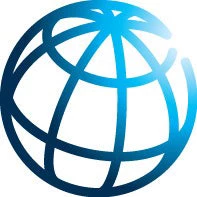 The year is 1966:
The year is 1966:
- England wins the World Cup.
- Star Trek, the classic science fiction television series, debuts on NBC-TV.
- The Beatles begin recording sessions for their landmark Sgt. Pepper's Lonely Hearts Club Band album.
And for the first time, the World Bank Atlas is published (see 1966 edition). Thirty eight editions of the Atlas would follow.
Fast forward nearly half a century. The World Bank launches its e-Atlas of Global Development, a sophisticated online, interactive tool that maps and graphs more than 175 indicators from the World Bank’s development database.
Developed in collaboration with HarperCollins, the e-Atlas of Global Development allows users to easily and quickly transform data into customized visual comparisons across time, countries, and regions. The resulting full color maps and graphs can subsequently be exported for sharing and later use (watch e-Atlas video here).
The e-Atlas lets you map more than 175 indicators for up to 200 countries over time including creating two maps to compare progress. Other features include scalable maps, timeline graphing, ranking tables, and import and export functions. Critical issues such as poverty, food production, population growth, climate change, international trade, and foreign direct investment are covered.

The e-Atlas of Global Development: A Visual Guide to the World's Greatest Challenges is a practical companion to the World Bank’s popular Atlas of Global Development, now in its third edition. Co-published with HarperCollins, the Atlas provides a comprehensive overview of the world and its people at the start of the 21st century.
Every topic is presented through easy-to-understand maps, charts, tables, and graphs along with engaging photographs. Web addresses of additional data sources are also provided. The Atlas has regularly been assigned in university classrooms as required reading around the world at both the undergraduate and graduate levels.
“The Atlas of Global Development has been and continues to be an excellent reference for journalists, teachers, students, and anyone interested in better understanding today’s critical development issues,” said Carlos Rossel, Publisher at the World Bank.
Both atlases draw on the World Development Indicators database.
Related Links:


Join the Conversation